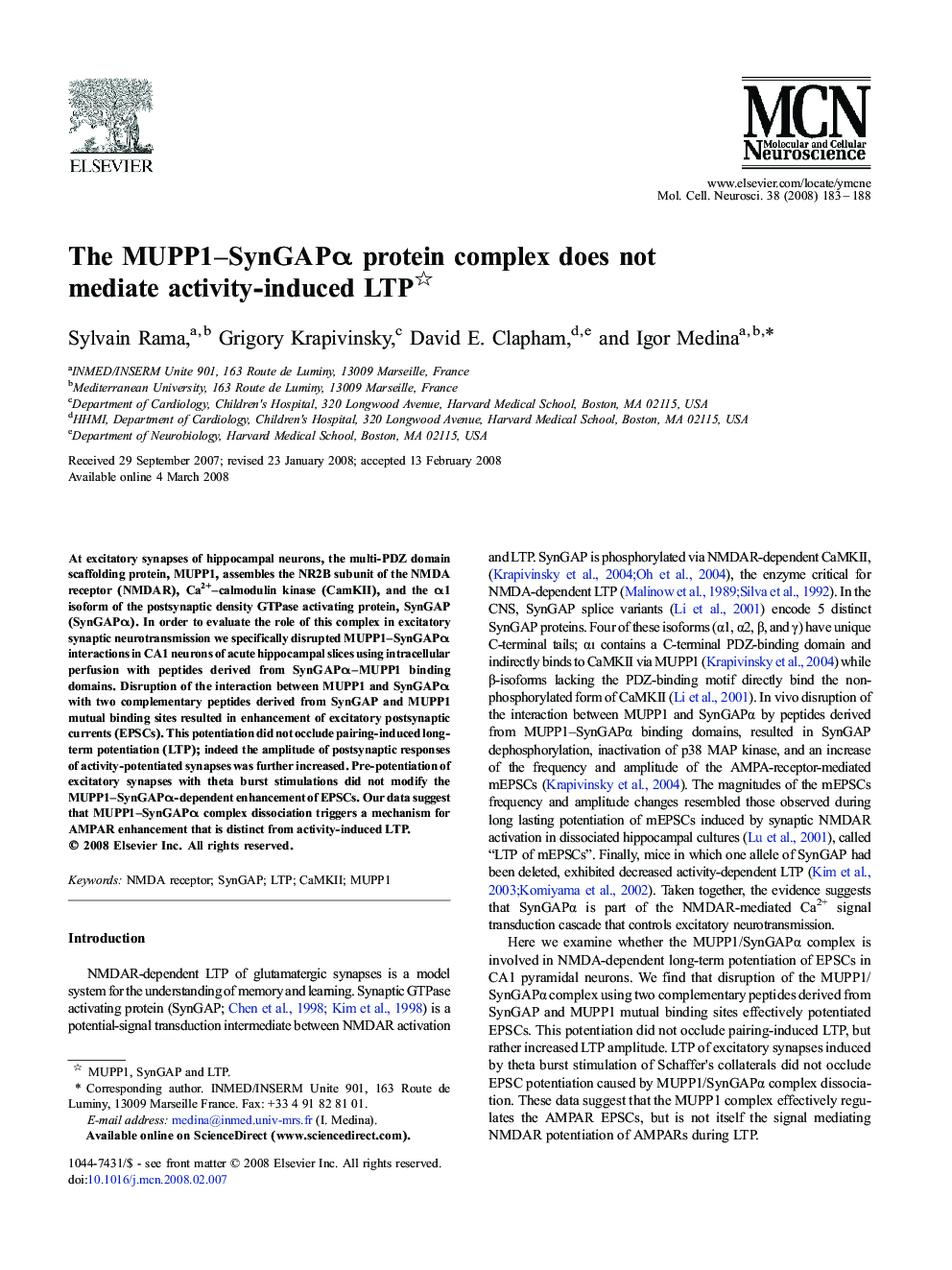| Article ID | Journal | Published Year | Pages | File Type |
|---|---|---|---|---|
| 2199104 | Molecular and Cellular Neuroscience | 2008 | 6 Pages |
At excitatory synapses of hippocampal neurons, the multi-PDZ domain scaffolding protein, MUPP1, assembles the NR2B subunit of the NMDA receptor (NMDAR), Ca2+–calmodulin kinase (CamKII), and the α1 isoform of the postsynaptic density GTPase activating protein, SynGAP (SynGAPα). In order to evaluate the role of this complex in excitatory synaptic neurotransmission we specifically disrupted MUPP1–SynGAPα interactions in CA1 neurons of acute hippocampal slices using intracellular perfusion with peptides derived from SynGAPα–MUPP1 binding domains. Disruption of the interaction between MUPP1 and SynGAPα with two complementary peptides derived from SynGAP and MUPP1 mutual binding sites resulted in enhancement of excitatory postsynaptic currents (EPSCs). This potentiation did not occlude pairing-induced long-term potentiation (LTP); indeed the amplitude of postsynaptic responses of activity-potentiated synapses was further increased. Pre-potentiation of excitatory synapses with theta burst stimulations did not modify the MUPP1–SynGAPα-dependent enhancement of EPSCs. Our data suggest that MUPP1–SynGAPα complex dissociation triggers a mechanism for AMPAR enhancement that is distinct from activity-induced LTP.
